A History of the County of Lancaster: Volume 3. Originally published by Victoria County History, London, 1907.
This free content was digitised by double rekeying. All rights reserved.
'Townships: Burtonwood', in A History of the County of Lancaster: Volume 3, ed. William Farrer, J Brownbill( London, 1907), British History Online https://prod.british-history.ac.uk/vch/lancs/vol3/pp324-328 [accessed 25 November 2024].
'Townships: Burtonwood', in A History of the County of Lancaster: Volume 3. Edited by William Farrer, J Brownbill( London, 1907), British History Online, accessed November 25, 2024, https://prod.british-history.ac.uk/vch/lancs/vol3/pp324-328.
"Townships: Burtonwood". A History of the County of Lancaster: Volume 3. Ed. William Farrer, J Brownbill(London, 1907), , British History Online. Web. 25 November 2024. https://prod.british-history.ac.uk/vch/lancs/vol3/pp324-328.
In this section
BURTONWOOD
Burtoneswod, 1228; Bourtonewod, 1251; Burtonwode, 1297; Bortounwod, 1337.
This township, of 4,192½ statute acres, (fn. 1) was long purely agricultural in character. The population has recently increased at a rapid rate, and in 1901 numbered 2,187 persons. The country is extremely flat, with much reclaimed marsh or mossland, drained by 'cuts' into the Sankey Brook, which, winding from north to south-east and south, forms the boundary of the township on those sides. It yields crops of wheat, clover, and hay, and some potatoes and turnips on a clay soil; but on the north it becomes a coal-mining district, and at Collins Green shafts of coal-mines are prominent features in the landscape. The geological formation illustrates the complete bunter series of the new red sandstone. Bewsey and Dallam are upon the upper mottled sandstone; Burtonwood, Bradley Hall, and Collins Green upon the pebble beds, the remainder of the township being upon the lower mottled sandstone, except a very small area of permian rocks and coal measures occurring to the west of Collins Green. The St. Helens and Sankey Canal, after crossing Sankey Brook, passes through the southeastern end of the township near Dallam and Bewsey. There is a station at Collins Green on the Manchester and Liverpool section of the London and North Western Railway, which enters the township on the east over the celebrated Sankey Viaduct of nine arches, each of 50 ft. span and varying from 60 ft. to 70 ft. in height, one arch spanning Sankey Brook and another the Sankey Canal. (fn. 2)
A school board was formed in 1876. (fn. 3)
There is a parish council.
MANORS
Probably known before the Conquest as 'Burtun' and held by one of the thirty-four drengs of Warrington hundred as a dependent manor or berewick of Warrington, this manor was subsequently included in the demesne of the lords of the honour of Lancaster, and by Henry I put into his forest between Ribble and Mersey, when it doubtless acquired its name of BURTONWOOD. In 1228 it was perambulated in accordance with the charter of the forest of 1224–5, and was retained in the king's forest within boundaries extending from Hardsty on the west to Sankey Brook on the east, and from Bradley Brook on the north to Ravens Lache on the south, reserving therein to William le Boteler and his heirs common of pasture and stock (instauri), mastfall for their swine, timber for their castle of Warrington and other buildings and for fuel. (fn. 4) The right of taking estovers defines the extent of the interest in this township held by the lords of Warrington.
It passed about 1229 to the earl of Chester with the rest of the comital demesne between Ribble and Mersey, and subsequently to Ferrers, earl of Derby, and we find William de Ferrers on 2 October, 1251, granting to the abbey of Tiltey in Essex—a house of the foundation of his ancestor Robert de Ferrers in 1152 —a messuage in 'Harderesley' in the Hey of Burton, with 120 acres of land and wood around it (with liberty to enclose the same), ample pasture for their stock and plough beasts, and licence to make two water-mills with weirs on the water of Sankey. (fn. 5) In December, 1251, William de Ferrers had a charter of free warren in this manor. (fn. 6) Two years later he was plaintiff in a suit with William le Boteler concerning common of pasture in the Hey of Burton. (fn. 7) About the year 1264 Robert de Ferrers sold the manor to William le Boteler for 900 marks, which the latter undertook to pay by half-yearly instalments of £10. (fn. 8) In 1280 Edmund earl of Lancaster released to William le Boteler a plot of land called Hardersley, in the wood of Burton, which the abbot and monks of Tiltey had sometime held of the earl of Ferrers. (fn. 9) At the death of the earl of Lancaster in 1296, William le Boteler held the manor of him for one penny yearly service. (fn. 10) At what time the abbey of Tiltey sold or resigned the estate of Hardersley is uncertain, but it was probably purchased by William le Boteler before 1280. During the time of the monks' ownership they seem to have established a grange here, within an enclosure of wood or park, to which they gave the name 'beau site,' afterwards softened to Beausee or Bewsey. (fn. 11) As early as the commencement of Edward II's reign the lords of Warrington had made this their country seat. (fn. 12)
In 1328, by deed dated at Bewsey, William le Boteler demised to Matthew de Southworth, John and Margaret, his children, a plat of land, meadow, and waste in Burtonwood and in the old park of 'Beausi,' and 1½ acre in the field of Harderslegh, for their lives and the life of the longest liver. (fn. 13) The Botelers wisely refrained from granting estates in this manor in fee, but demised tenements for lives or terms of years by which increasing areas of cultivated lands accrued to them from time to time at greatly enhanced values. A fine levied in 1332 discloses the fact that there were then in the manor at least fifty messuages, 250 acres of land and meadow, and 114 acres of wood in the hands of the tenants held for terms of one, two, or three lives. (fn. 14) In 1337 the principal tenants of the manor were Matthew de Southworth, Alan de Eccleston, and William Muskil. (fn. 15) Burtonwood was then described as being neither a vill nor a hamlet. (fn. 16) It seems to have contained much timber at this time, for in 1331 William le Boteler sued William son of William de Calverhale for 100 marks, the value of trees which he had cut down here and carried away. (fn. 17) The demesne lands were described in 1416 as consisting of lands and tenements called Dallum, the 'Parkes feldes,' and the Dourehey, valued at £9 clear, in addition to the manorhouse and lands of Bewsey. (fn. 18) At the death of Sir John le Boteler, in 1463, his messuages and lands here were said to be held of Lord Ferrers in socage by the service of 1d. yearly. (fn. 19) At the death of Sir Thomas Boteler, (fn. 20) 1522, Bewsey was said to be worth £74 clear. (fn. 21)
In 1580 Edward Butler alienated the manor to Richard Bold of Bold, (fn. 22) and in 1597 John Mainwaring and Elizabeth his wife and Sir Robert Dudley and Alice his wife, to whom Edward Butler had conveyed an interest in his estates in 1581, conveyed the manor by fine to Richard Bold and Thomas Ireland. (fn. 23) By a subsequent division, or perhaps by virtue of the respective deeds of conveyance made to them, Bold acquired the manor, twenty messuages, 350 acres of land, meadow and pasture, and 300 acres of moor and turbary lying near his demesne lands in Bold, (fn. 24) whilst Ireland acquired the manor of Bewsey and a reputed manor of Burtonwood with thirty messuages, 1,200 acres of land, meadow and pasture, and 210 acres of moor, moss, and wood in Bewsey and Dallam. (fn. 25) From this time till the year 1861 the manor descended like the other Bold family estates (fn. 26) to Sir Henry Bold-Hoghton, the representative of that family in right of his first wife. It was then sold to Mr. Thomas Henry Lyon of Appleton, near Daresbury, the present owner. (fn. 27)
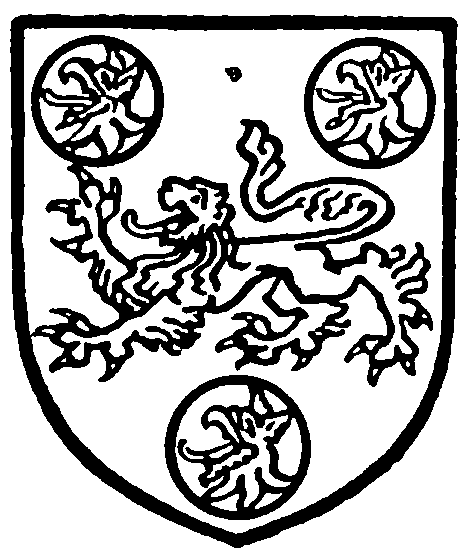
Lyon of Appleton. Azure, a lion passant or between three plates each charged with a griffon's head erased sable.
The origin of the name of the mesne manor of BEWSEY and the date of its acquisition by the Botelers have been suggested above. For nearly four centuries it was the abode of the lords of Warrington. In 1368 William le Boteler had a licence for his oratory at Bewsey. (fn. 28) The manor-house, park, and demesne lands lay within the township of Burtonwood and formed part of the superior manor, but some lands in Warrington and Great Sankey seem to have been included in the park and demesne of Bewsey. (fn. 29) Upon the dispersal of the estates in the time of Elizabeth by Edward Butler, this manor was acquired by Thomas Ireland, afterwards of Bewsey, from whom it has descended to John Powys, fifth Baron Lilford, in the manner described under Atherton. (fn. 30)
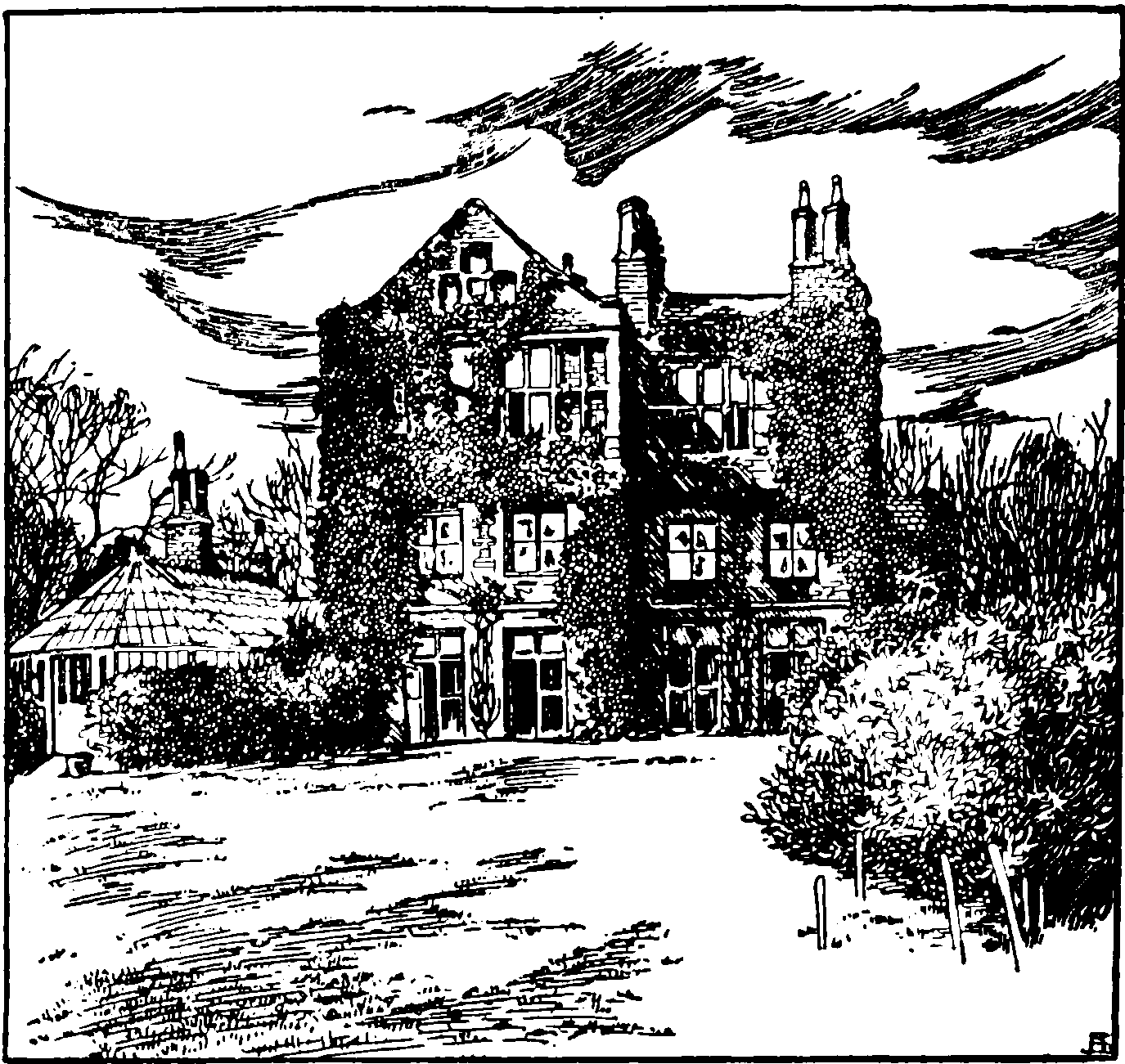
Bewsey Hall, Warrington
Bewsey Hall stands within a nearly circular moated enclosure. There remains only the south end of a fine house of circa 1600, which had its principal front to the east, of three stories, with tall, squareheaded, mullioned and transomed windows. The plan belongs to the stage of development when the hall is represented by a small central part of the front flanked by projections representing the bay and porch respectively. Beyond these at each end projected a larger gable, as in the earlier houses, but at Bewsey only the large south gable and the projection representing the bay of the hall now remain. The stonework—of red sandstone—is in poor condition, and the house preserves nothing of its ancient fittings.
In the fifteenth century Bewsey was the scene of one or two notable acts of violence. Isabel widow of Sir John Boteler was in July, 1437, seized by William Poole, of Wirral, and a number of accomplices, outraged and carried off to Birkenhead and Bidston, where she was compelled by threats to marry him. He then made his escape into Wales, and thus appears to have escaped punishment. (fn. 31) Her son Sir John Boteler, who died in 1463, is said to have been the victim of an outrage instigated by Sir John Stanley and Sir Piers Legh—a ballad, perhaps contemporary, giving the story of the surprise of Bewsey Hall at midnight by a party of men who crossed the moat in a boat of a bull's hide, the murder of the chamberlain, and then of Sir John Boteler himself. (fn. 32)
James I, in his Lancashire progress of 1617, visited Bewsey 21 August, and made its owner a knight. (fn. 33)
A bronze box found in the moat at Bewsey is perhaps mediaeval. (fn. 34)
The first enfeoffment of the Haydock family of the mesne manor of BRADLEY, (fn. 35) where they and their successors the Leghs resided for several centuries, has not been preserved on record, but was probably made before the acquisition of the manor of Burtonwood by William le Boteler circa 1264. In 1336 William le Boteler of Warrington demised to Gilbert de Haydock and his son Matthew, for their lives, a plat of land and waste on the western side of their field called Pikiswode, another plat of wood and waste on the southern side of Bradelegh Brook, and 3 acres of arable land on Sonki Bonke, all lying in Burtonwood, with liberty to clear the land of trees and cultivate it. (fn. 36) The same Gilbert had a charter of free warren in his manor of Bradley in 1344. (fn. 37) In 1357 Sir William le Boteler released to John son of Gilbert de Haydock and Joan his wife all the lands and tenements which they held of him in Warrington, Great Sankey, and Burtonwood in return for a deed of feoffment granting to Sir William for life certain lands and tenements of his inheritance which had been the subject of litigation between them, (fn. 38) and in 1358 another agreement was made between William le Boteler and Gilbert de Haydock, touching common of pasture and improvements made, or to be made, in the common wood of Burtonwood. (fn. 39) John de Haydock had a licence in 1386 for the celebration of divine service in his manor of Bradley. (fn. 40) By the marriage of Joan, daughter and heir of Sir Gilbert Haydock, to Sir Peter Legh of Lyme, (fn. 41) this manor passed to the Leghs, but was sold early last century to Samuel Brooks, of Manchester, banker, and has since descended in his family.
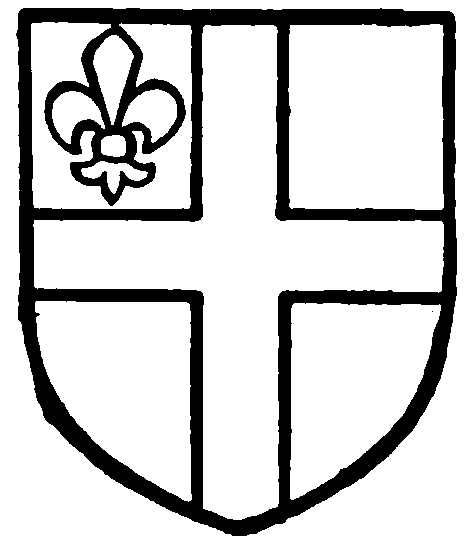
Haydock of Haydock. Argent, a cross and in the first quarter a fleur-de-lis sable.
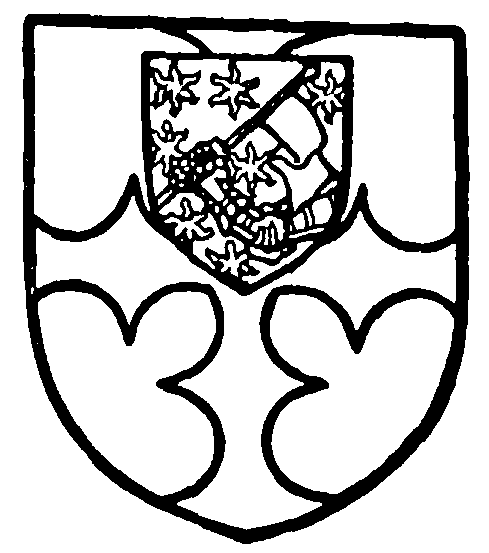
Legh of Lyme. Gules, a cross engrailed argent; an escutcheon of augmentation sable semee of estoiles silver, an arm embowed in armour proper, the hand grasping a standard of the second.
Leland recorded that 'Syr Perse Lee of Bradley hath his Place at Bradley in Parke a ii. miles from Newton.' (fn. 42) The memory of the park is preserved in the name of two fields called The Parks, near the site of the old hall. (fn. 43) Part of the ancient manorhouse, including the Knights' Chamber, was of an older date than 1465. Shortly before that year Sir Peter Legh had greatly enlarged and improved his residence. (fn. 44) Of the stately building which existed at that time now only the gateway and the moat remain. (fn. 45) The gateway is faced with wrought stone, and has been covered with a fan vault of two bays, the springers of which yet remain. (fn. 46) The details of the work are plain, and point to a date in the second half of the fifteenth century. It is approached by a stone bridge over the moat, and within the enclosure stands the present Bradley Hall, a brick farmhouse of no great age, but preserving several interesting fragments of older work. The most notable are the front door and the door to the kitchen, which have elaborate wrought-iron scrolled hinges of the fourteenth century. On the stairs are two roundles let into the wall, bearing the arms of Standish of Standish and Legh of Lyme. (fn. 47) In the roof is a beam now doing duty as a purlin, inscribed thus:—
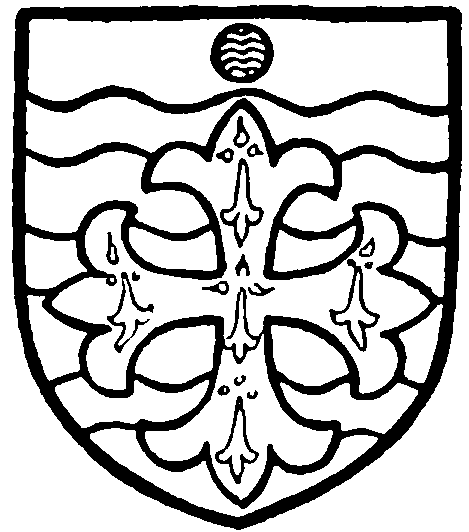
Brooks of Manchester. Argent, three bars, wavy azure, a cross patonce erminois, in chief a fountain.
[Her]e . . . maister dothh, and mistris both accorde: with godly mindes and zealous hartes to serve the livinge lorde. Anno. 1[5]97. Henry Wesle. (fn. 48)
The landholders contributing to the subsidy levied about 1556 were Sir Peter Legh and Thomas Butler. (fn. 49) Their successors in 1628 were Sir Peter Legh and Thomas Ireland. (fn. 50)
The chapel of Burtonwood was erected in 1605–6 upon land granted by Thomas Bold of Bold, who by a deed of feoffment dated 27 September, 1605, conveyed about 1 acre of land to feoffees, whom he directed to erect thereon a house of prayer, sufficiently to uphold the same, and to choose a fit person to read divine service and 'teach Grammar Schole' there according to the intent of the last will of Thomas Darbyshire of Burtonwood, yeoman, dated 23 January, 1602. This testator had bequeathed £60 to trustees for the purpose of founding a chapel at Windybank in Burtonwood. The chapel was built at the common charge of the township, (fn. 51) but in 1650 it was described as inconveniently situated for the use of the township. William Baggaley was the incumbent, elected by the inhabitants; (fn. 52) he had £40 a year by order of the committee of sequestration made in 1646, when there were found to be 120 families resident in the township. (fn. 53) The report of 1650 was adverse to him, and he was soon removed by the Independents, who brought in Samuel Mather, eldest son of Richard Mather, born at Much Woolton, and the author of an Irenicum. (fn. 54) Mather was removed in 1662. (fn. 55) The present church of St. Michael is a plain building of brick. The register dates from 1668. The benefice is a vicarage, in the gift of the rector of Warrington.
In 1690 Peter Gaskill's dwelling, known as the Red House, was licensed as a meeting place for dissenters. (fn. 56) A Wesleyan church was built in 1850.
The Passionist Fathers of Sutton in 1886 built the school-chapel of St. Paul of the Cross, the first mass being said on 31 October. In 1898 a resident secular priest was appointed to the mission, and three years later an iron church was opened. (fn. 57)
